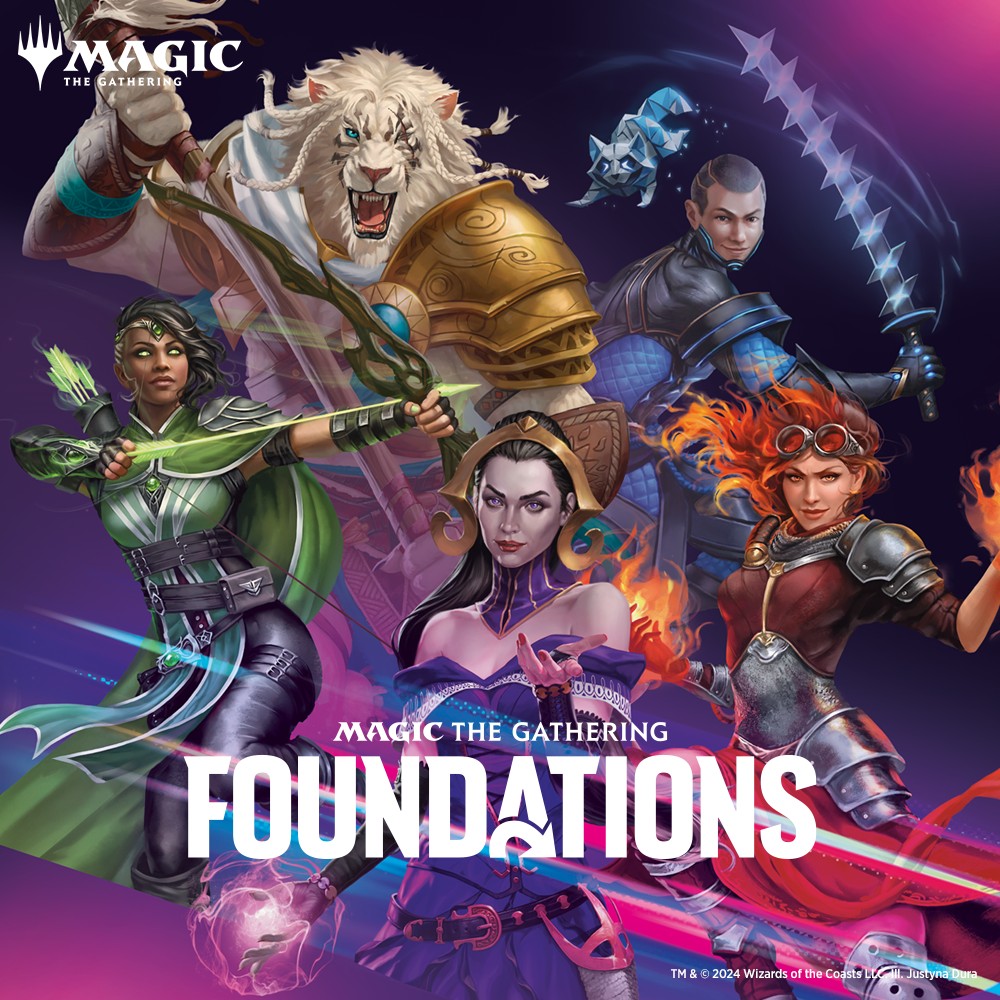Ages ago, when multiplayer games were a multilayered, chaotic mess, web writer Anthony Alongi made psychographic animal profiles for multiplayer card evaluation. Succinctly, they were as follows (bearing in mind that each card had a rating as well, to indicate how well it fit into its niche):
The Rattlesnake is a card that sits on the field and wards away others. Perhaps it is a reset button like Oblivion Stone or Nevinyrral's Disk or maybe it’s just a big threat as Copperhoof Vorrac was at the time. The idea behind rattlesnakes is they’ll bite back if you step on them, but leave them alone? You’re fine.
The Gorilla is a card or profile that changes the way the game is played and has an immediate impact that focuses everyone’s attention on the player. The example given in the archived Multiplayer Hall of Fame article on the Wizards site is Living Death. It’s splashy, it creates a ton of triggers and havoc, and you need to have a plan before it wrecks the game.
The Spider is a surprise element. It drops out of the ceiling or a crack in the game and has an immediate impact. Illusionist’s Gambit sending attackers elsewhere adds a nice twist to your games of Commander, for example.
The Pigeon gets better with larger number of opponents. My loathed Prophet of Kruphix fits this profile perfectly, as she is bearable in a duel but completely absurd in a four or more player game.
Plankton (also known as “Group Hug” these days) offers benefits to all players. These benefits can be as innocuous as an early Howling Mine or as obnoxious as a Phelddagrif offering one player a bunch of extra card draw in some vain hope that he or she will lay off the aggression.
Finally, the Cockroach (named after Brood of Cockroaches) offers a repeat benefit for its user, whether it’s card draw or a recursion or anything that makes for value on its user’s part. The first thing to come to mind here is Skullclamp, which can easily draw up to 20 cards if left unimpeded with its friend Bloodghast.
Fun! But what about the rattlesnake stuff?
Getting there. Strolling over to the Canadian Encyclopedia at this address we see that rattlesnakes are known for having a “(...)broad, triangular head with movable fangs, a stout body and a 'rattle' made of modified scales, each of which once capped the tip of the tail. The buzzing sound produced by rapidly vibrating the tail is believed to act as a defensive warning to intruders (Emphasis mine). Rattlesnakes are pit vipers (i.e., have a heat-sensing pit on either side of the face).”
Note the tie-in to Mr. Alongi’s card profile: the vibrating tail wards off other players, until they feel they should take that chance and move in for the kill. By doing so though, they expose themselves to losing permanents, attack steps, or even an advantage to another opponent that might move in for a cleaner kill. It becomes a case of MAD (Mutually Assured Destruction), except you have the information of your opponent’s boardstate while they see...enchantments? It should surprise no one at this point that I am referring to my spinoff of Nick Sirman’s “Obnoxiousaur”, a green white Enchantress build that slowly grinds you into the ground while generating insane card draw off the various “enchantress” cards such as Enchantress’s Presence, Argothian Enchantress, Mesa Enchantress and Verduran Enchantress. This idea seemed great when I started building the deck (and next week’s tribune will be a deck help clinic as I seek to tone down the clunkers) but in practice didn’t quite come to fruition.
Why not? Well, occasionally I’ll have a Karmic Justice out and get to off an important land or equipment card, or an opponent might be lured into using a board wipe with Martyr’s Bond in play but ultimately people see the rattlesnake and just give it a clear berth. This is the ideal situation, allowing you to accumulate resources and react to incoming threats if you need to, but eventually you need to win. And in play, my deck had too few finishers. Yes, overrunning someone with Rude Awakening was worth some mad style points, but an eight mana spell that only wins the game against a damaged opponent or when you have 20+ lands out (not an uncommon occurrence with Karametra, God of Harvests) isn’t a reliable finisher. The situation became reinforced against combinatory players. They were especially cautious against me (my main goal!) but ultimately ground out enough extra spells to defeat me. In effect, I had become a rattlesnake, but a toothless one, impotently agitating its tail until a well-heeled boot crushed me.
Given all this, why would a player choose to emulate a rattlesnake in a format full of battleships and haymakers? Simply put, it’s a great experiment to try if you like living on the edge of the game, anticipating your opponent’s plays and setting up your own with magical chess pieces. It also creates a certain disquiet and ensuing mind games at the table: if Pierre has a Rout then is he worth attacking? Is there a Fog effect there to punch through? Will that Academy Rector turn into a Parallax Wave, which - with Opalescence - will have some hilariously one-sided effects? It’s worth at least trying to adopt this position once in your Commander building career, if only because you can be the one with Team Slytherin, and who doesn’t like being the sneaky one?
Until next week, may you be a cold-hearted snake and may they look into your eyes.


